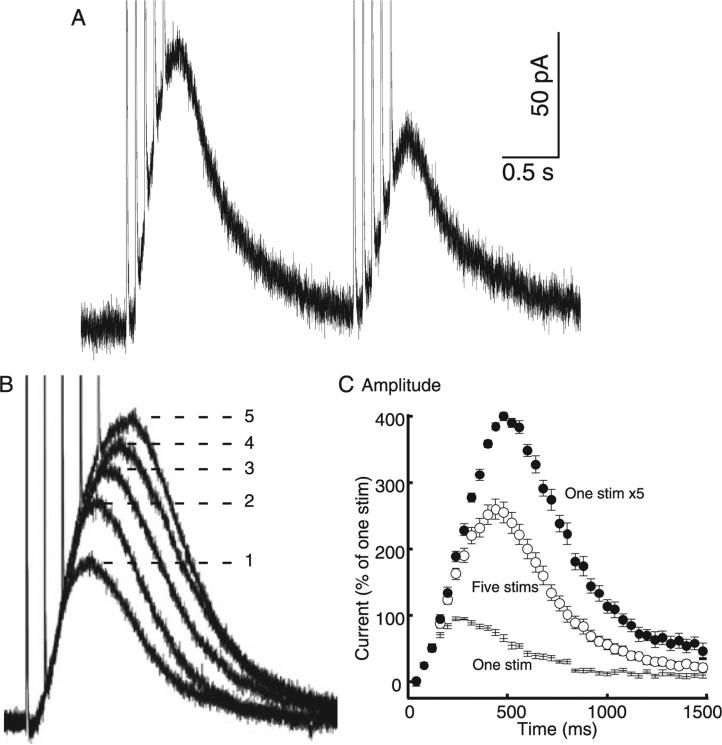Fig. 2.
Depression was observed when multiple stimuli were used to mimic bursting. (A) The paired-pulse depression produced by a pair of single pulses was maintained but somewhat blunted by using a pair of stimulus trains. (B) However, as the number of stimuli was increased from one to five (at 12.5 Hz) each successive pulse produced less postsynaptic current. (C) The convolution can be observed by mathematically simulating perfect temporal summation of five single IPSCs. The measured time course of 11 normalized single pulse IPSCs is plotted as ‘One stim’. Perfect additivity of five pulses (at 12.5 Hz) would produce the simulated time course predicted with the closed circles labelled ‘One stim × 5’. The measured IPSC evoked by a train of five stimuli is considerably smaller (‘Five stims’; F1,20 = 23.5, P < 0.0001, n = 11), illustrating the extent of subadditivity in the IPSC produced by a train of five stimuli.

